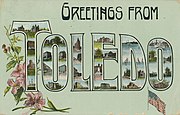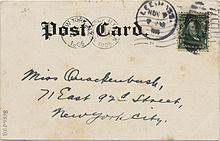
A postcard or post card is a piece of thick paper or thin cardboard, typically rectangular, intended for writing and mailing without an envelope. Non-rectangular shapes may also be used but are rare. There are novelty exceptions, such as wooden postcards, copper postcards sold in the Copper Country of the U.S. state of Michigan, and coconut "postcards" from tropical islands.
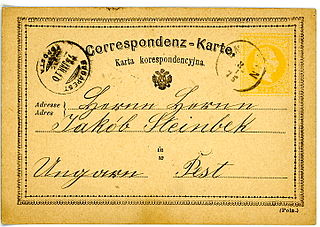
Postal cards are postal stationery with an imprinted stamp or indicium signifying the prepayment of postage. They are sold by postal authorities. On January 26, 1869, Dr. Emanuel Herrmann of Austria described the advantages of a Correspondenz Karte. By October 1, 1869 the world's first postal card was produced by Austria-Hungary. They caught on quickly. By the end of 1870, Great Britain, Finland, Switzerland and Württemberg joined the countries issuing postal cards. In the United States, they were first produced in 1873. Some of the forms taken by postal cards include the regular single card which may be commemorative or definitive, attached message-reply cards, airmail postal cards, and official postal cards used for official government business with a "penalty for private use".

Postal service in the United States began with the delivery of stampless letters whose cost was borne by the receiving person, later encompassed pre-paid letters carried by private mail carriers and provisional post offices, and culminated in a system of universal prepayment that required all letters to bear nationally issued adhesive postage stamps.

A greeting card is a piece of card stock, usually with an illustration or photo, made of high quality paper featuring an expression of friendship or other sentiment. Although greeting cards are usually given on special occasions such as birthdays, Christmas or other holidays, such as Halloween, they are also sent to convey thanks or express other feelings.

Deltiology is the study and collection of postcards. The word originated in 1945 from the collaboration of Professor Rendell Rhoades (1914-1976) of Ohio and colleagues at Ohio State University. A biographical sketch of Dr. Rhoades life by his wife Nancy, was provided to the Canadian Friends (Quaker) Historical Association in 1994. Dr. Rhoades had responded to a contest by Editor Bob Hendricks in Post Card Collectors Magazine to create a more scholarly name for the hobby of postcard collecting. 'Philocartist' was a term used in the early 1900s, possibly coined by the noted early philatelist Fred Melville in his 1903 publication The A.B.C. of Stamp Collecting

Vinegar valentines were a type of cheeky postcard decorated with a caricature and insulting poem. A lampoon of Valentine's Day cards, the unflattering novelty items enjoyed a century of popularity beginning in the 1840s during the Victorian era.

An advertising postcard is a postcard used for advertising purposes. Postcards are used in advertising as an alternative to or to complement other print advertising such as catalogs, letters, and flyers. Advertising postcards may be mailed or distributed in other ways.

The Columbian Issue, also known as the Columbians, is a set of 16 postage stamps issued by the United States to commemorate the World's Columbian Exposition held in Chicago during 1893. The finely-engraved stamps were the first commemorative stamps issued by the United States, depicting various events during the career of Christopher Columbus and are presently much valued by collectors.
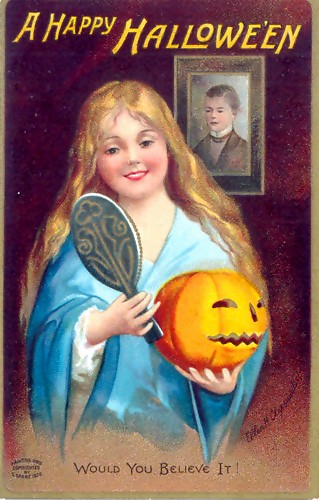
Ellen Hattie Clapsaddle was an American illustrator/commercial artist in the late 19th and early 20th centuries. She is recognized as the most prolific souvenir postcard and greeting card artist of her era.
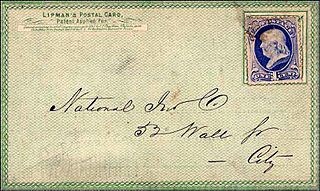
John P. Charlton was an American printer and stationer from Philadelphia, Pennsylvania, who is often credited as the inventor of the private postal card, which he copyrighted in 1861 together with Hymen Lipman.
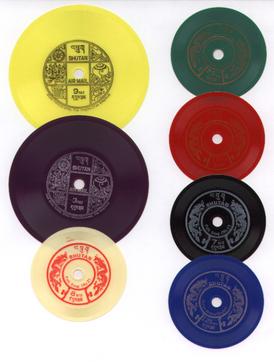
The first postage stamps of Bhutan were issued in 1962, the same year that the first motorable road was opened. Before that there was a mail delivery system in place for official mail using mail runners, and between 1955 and 1962 revenue stamps were accepted as payment for internal mail. With the opening up of Bhutan in the early 1960s, a formal postal system was introduced. The American entrepreneur Burt Todd assisted in establishing a postage stamp program in the country and Bhutan became known for the unusual designs and materials of its stamps which were chosen by Todd specifically to attract attention. With the assistance of the Indian postal advisor Dr. K. Ramamurti, who was in Bhutan from 1964 to 1968, a proper postal organization and infrastructure was set up under the leadership of a young Bhutanese officer Mr. Lam Penjor, who became the Director of the Department of Posts and Telegraphs.
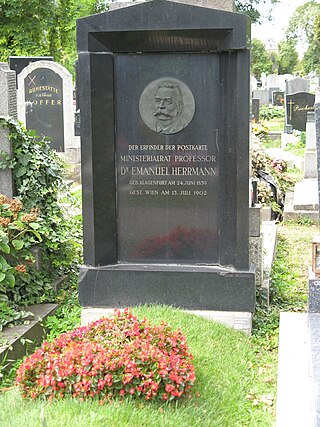
Emanuel Alexander Herrmann was an Austrian national economist. He is considered the decisive last in an international line of inventors of the postal card.
Stanley A. Piltz was an American photographer and publisher of Mid-Century Modern graphic design and printed ephemera. Stanley A. Piltz Company, San Francisco, issued many Linen Type postcards from the 1930s to the 1950s, depicting scenes of California, especially of the San Francisco Bay Area and the 1939 Golden Gate International Exposition. They consisted primarily of scenic views, city, town, civil and military infrastructures and national monuments views. Linen Type postcards were produced on paper with a high rag content which gave the postcard a fabric type look and feel. At the time this was an inexpensive process. Along with advances in printing technique, linen type cards allowed for vibrant ink colors. Stanley Piltz pioneered the Linen Type postcards with his "Pictorial Wonderland Art Tone Series".

Purger & Co. was a German printing house, based at Mozartstraße 13, Munich, Germany. The founder of the company was most probably named Adolf Purger. The company was known for the coloured postcards it produced in the beginning of the 20th century. The postcards were printed in three colour chromolithography, a system called photochrome, with the indication Photochromiekarte. The company was printing not only postcards for their own account, but also for other companies, as was the case, for example, of the colour postcards of the Krikelli's series of Tinos, Greece.

Burton Frasher was an American photographer and publisher of mid-century modern ephemera. His black-and-white landscape photographs of the American West have been widely reproduced.

Frederick Hartmann was a London-based postcard publisher, active in the UK from about 1902 to 1909. He was a leading proponent of the "divided back" style, key to its success in England, and may have produced the first divided back card in the world.
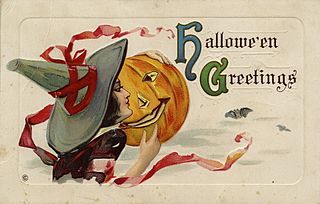
A Halloween card is a greeting card associated with Halloween. The concept originated in the 1890s United States, experiencing a peak of popularity there in the early 1900s. Until the advent of the common home telephone, Halloween cards occupied a role similar to Christmas cards and birthday cards. Today, many cards from the popular designers of the period are sought after as memorabilia.
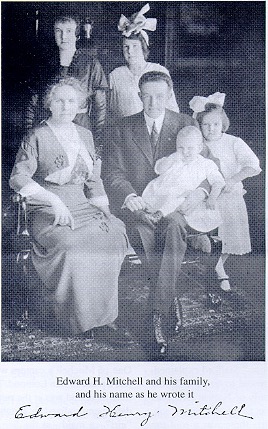
Edward Henry Mitchell was an American businessman and postcard publisher of San Francisco. He was owner of the Edward H. Mitchell publishing company that was one of the most prolific post card publishers on the western coast of the United States. He was based in San Francisco from the late 1890s to the early 1920s.

Newman Post Card Co. (1904–1918) was founded by Oscar Newman. The Newman Post Card Company published post cards in hand colored collotype and tinted halftones, which were mostly holiday cards and views of Southern California.

Large-letter postcards were a style of postcards popular in North America in the first half of the 20th century, especially the 1930s through the 1950s. The cards are so-called because the name of a tourist destination was printed in three-dimensional block letters, each of which were inset with images of local landmarks. Sometimes called big-letter postcards, many featured the stock phrase "Greetings from..." which was derived from cards in Germany that read Gruss Aus.

